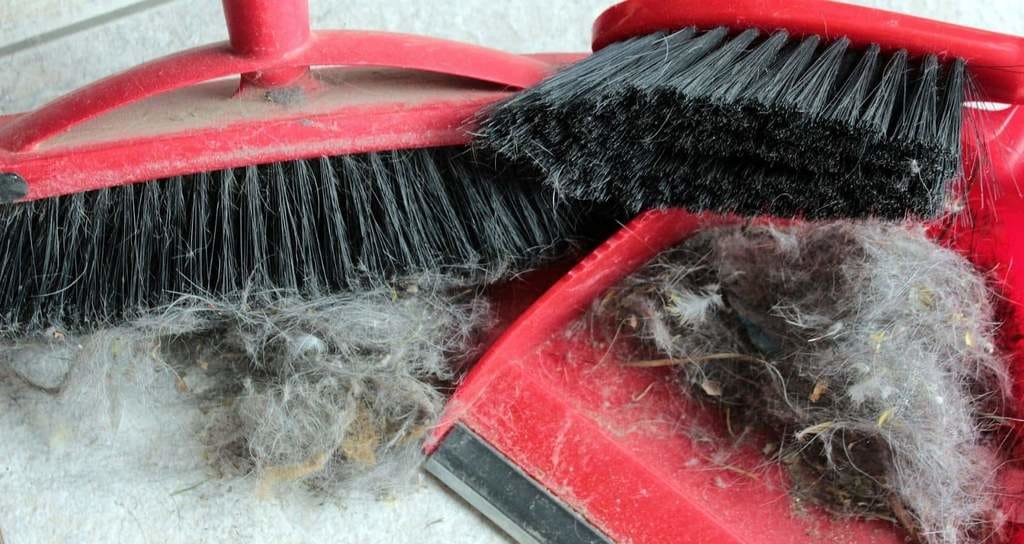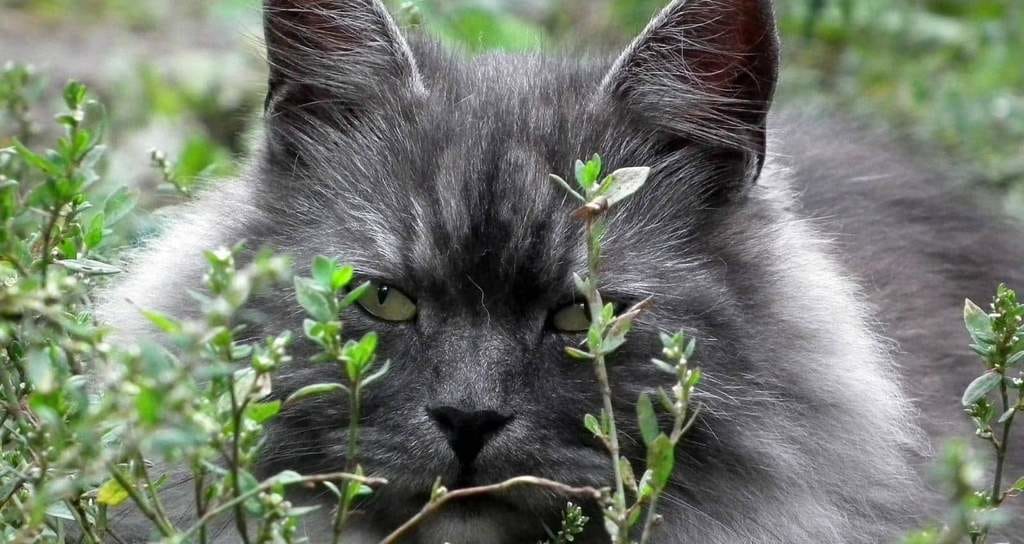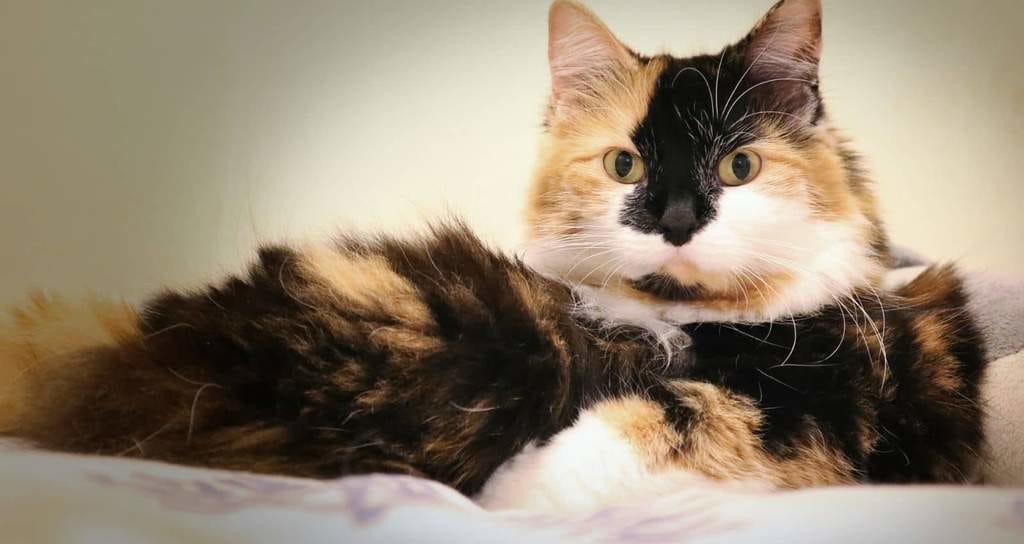Do you love cats but suffer from mild allergies and don't know if they are caused by cats? Are you hesitant to adopt? Do not panic !
In this article we explain how you can find out, and if so, how to find the type of cat that suits you best.
1. Cat allergies: a common phenomenon

Cat allergy affects almost 10% of the population. If, around cats or cat hair, you develop symptoms such as coughing, watery eyes and sometimes small pimples, you may be allergic. So what to do? Take antihistamine medication or give up adopting a cat? Here are our tips.
2. Symptoms:
Cat allergy generally manifests itself without delay: symptoms therefore appear within minutes or hours following contact with the animal. Also pay attention to allergens that are deposited on clothing, people, or surfaces such as fabric sofas for example.

Symptoms mainly arise in the ENT sphere in the following forms:
- Runny nose;
- Rhinitis with sneezing;
- Conjunctivitis;
- Asthma attacks;
- Skin symptoms: outbreaks of hives or worsening of atopic eczema.
3. What causes allergic reactions?

You would think that cat allergy is caused by the cat hair itself. However, it is more linked to exposure to allergens produced by cats.
The most common allergen is the Fel D1 protein secreted by the cat through its salivary and sebaceous glands. There are of course other allergens such as the Fel D2 protein which can explain cross allergies with dogs or even other food allergies.

An allergic reaction occurs when there is either direct contact or indirect contact by depositing allergens on surfaces. This means that allergens can be brought in by animals that come to your home (a friend's cat for example), or when you visit people with animals.
Note that people who already have common allergies are more likely to be allergic to cats, while in 10% of cases there is no known history. You still need to check that you are actually allergic to the Fel D1 allergen.
4. What to do in case of allergic symptoms?

First of all, go to the allergist to test if it is indeed a cat allergy.
If the allergy is confirmed, treatments exist:
- Antihistamine medications , nasal corticosteroids and eye drops if the symptoms are mild (examples: rhinitis, conjunctivitis, etc.).
- Pulmonary function tests , basic treatment and bronchodilator in case of crisis;
Be careful, however: if there are major attacks, it is advisable to separate from the cat , and it will take 6 to 7 months for the allergens to disappear from the house. Be careful with your desire to adopt in the event of contraindications.

Serious and reassuring advice: if after all this, you still suffer from repeated allergic attacks, desensitization is also possible . Your allergist will then tell you what to do.
Finally, let's talk about another solution: in 2019, researchers from Zurich discovered a molecule that would neutralize the Fel D1 protein at the origin of allergic reactions in humans. The dose injected into the cat caused its Fel D1 level to decrease.

However, as interesting as it may seem, this solution remains problematic because it consists of “immunizing” a cat against a protein that it produces when it is not itself sick. On the other hand, we do not know the exact role that this protein plays for cats or its possible adverse effects. It would therefore be more logical to treat the human being rather than the cat.
5. How to prevent cat allergies on a daily basis?
By adopting simple hygiene and home maintenance measures , we can avoid medical solutions that are sometimes complex to implement and costly, and effectively resolve most problems.

Equip yourself with an indoor air purifier:
So, you could start by equipping yourself with an air purifier with a HEPA (High Efficiency on Air Particle) filter . It is indeed a very effective solution because the air purifier works by absorbing the air from the room to reject it purified, free of a large part of the polluting particles, irritants, and allergens.
The air thus passes through several filters. First, a first filter, also called a pre-filter , retains the thickest particles, those which are often visible to the naked eye: dust, hair, and your cat's hair. Then, the air passes through an activated carbon filter , the role of which is to retain gases, odors, smoke and certain volatile organic compounds (also called VOCs).
Finally, a HEPA filter, like those in vacuum cleaners, retains the finest particles, those which are invisible to the naked eye.

Note that some brands have created all-in-one filters so that their devices only include one, easier to change. Thus, the successive layers which make up the cartridge combine several functions. You will simply change it at periodic intervals according to the manufacturer's instructions.
Note that some high-end purifiers will include innovative technologies such as photocatalysis or ionization. Photocatalysis consists of destroying polluting particles through a chemical reaction. However, it remains controversial because it could generate new harmful particles. So be sure to find out about this technology before making your choice.

Regarding the ionization process, it is used to eliminate particles suspended in the air by pressing them to the ground (the device produces negative ions which attach to polluting particles and weigh them down). In the same way as for photocatalysis, certain studies express reservations regarding the use of ionization, the safety of which is still not certain to date.
Choosing your vacuum cleaner:
To fight against allergies and protect your respiratory tract, you need to choose your vacuum cleaner carefully. Therefore, prefer a vacuum cleaner with bag and HEPA filter , which are the most efficient on the market. Avoid cyclonic vacuum cleaners which, in principle, do not suck up particles as fine as HEPA.

When choosing your HEPA vacuum cleaner, pay close attention to the vacuum rate of the device, expressed in kPa (“kiloPascals”) . Contrary to popular belief, it is this value, and not the power consumed by your device (in kWatts), which indicates the true suction power of the vacuum cleaner.
Last (very) important figure, the minimum size of the particles filtered (expressed in μm, pronounced “microns” or “micrometers”). The lower this number, the better the particles are filtered.
Another thing: if you want to invest, we advise you to look at steam vacuum cleaners, which will vacuum at the same time as they will sterilize your surfaces (tiles, parquet floors, carpets, fabric sofas, etc.) thanks to the steam projected at each passage. You will thus be able to reduce even more drastically the contamination of carpets and other textiles in your home.

Try to combine the classic HEPA vacuum cleaner which will be more efficient in suction, then use the steam mop at the end . You will be reassured to live in a healthy home! In addition, you avoid the use of chemical cleaning products, which are harmful to you and your pets.
Last but not least advice: vacuum often, at least once a week, or ideally twice . Your pet Sphynx has a knack for losing more hair than you might think.
Other tips for minimizing exposure to cat allergens:
Choose smooth floors , such as bare parquet and tiles, over carpet and rugs. In fact, you will prevent many hairs and other contaminating particles from becoming permanently attached and forming large bacteria nests, especially when the carpets are too large to be machine washed.
Also make it a habit to forbid the cat from coming into the bedroom and sleeping on your bed . We know cats love to curl up at our feet at night and it can be frustrating, but be firm.

Wash textiles and sheets regularly at a machine temperature above 60°C . Despite the fashion of cold washing, nothing beats a high temperature to eliminate all allergens and dust mites. Also remember to activate anti-allergen mode , if it is available on your machine.
Brush regularly and wash your cat with a special shampoo which will reduce the level of allergens present in your cat for 24 to 48 hours.

6. Which cat to choose to avoid the risk of allergies?
First of all, you should know that uncastrated male cats are the most allergenic because their salivary and sebaceous glands produce more Fel D1, the main allergenic feline protein, due to a higher testosterone level.
By choosing your cat breed carefully, it is possible to have a cat that is more hypoallergenic than others. So you will be happy, and so will he.

Although no breed is completely hypoallergenic , studies claim that some breeds are less likely to trigger allergies than others. One of the causes is hair loss , another is the production of less Fel D1 protein.
However, it is important to note that each cat within these breeds can trigger allergies, depending on the nature of the allergens which are different from one cat to another.
Here is our ranking of 10 cat breeds that could be suitable for people suffering from allergies.
Advice valid for all breeds of cats:

As mentioned above, most people with cat allergies are not allergic to the cat's fur itself, but rather to the proteins in its saliva, urine, and dander . Regular cleaning of areas where your cat spends a lot of time will likely reduce some of these allergens.
#1 The Javanese
The Javanese is the result of a cross between a Balinese and a colorful shorthair cat, resulting in a Siamese type cat with long hair and a wider range of coat colors. These cats have no undercoat, which means they don't shed much and only require weekly brushing. They therefore shed fewer allergens, which may be suitable for people with mild cat allergies.
#2 The Cornish Rex

Some people think that the Cornish Rex 's short, wavy coat doesn't tend to shed as much dander as long-haired cats or cats with dense coats. Rex cats only have a fine undercoat and no top hair at all. These cats are generally very intelligent and active, and they love to get your full attention.
#3 The Devon Rex

Like the Cornish Rex, some people also recommend the Devon Rex as one of the best cat breeds for allergy sufferers . Their wavy coat usually sheds little , which minimizes the spread of dander and other allergens in your home. These cats are extroverted and playful, and they prefer to participate in their owners' activities.
#4 The Balinese

The Balinese is almost identical to the Siamese cat breed in many ways, except for its long fur and plumed tail. Despite the length of their coat, this affectionate and active breed is known for only needing to brush their fur once a week. These cats might also have less of the Fel D1 protein that causes allergies in many other cats. He's also a magnificent cat, our favorite in the ranking!
#5 The Oriental

A truly incredible looking cat with its ultra-thin body, angular face and large pointed ears, the Oriental is a cross of several cat breeds , including the American shorthair, the Abyssinian and the Siamese. These athletic, playful, and intelligent cats shed moderately and need to be brushed twice a week . Rubbing them with a damp cloth can also help remove dead hair and dander to minimize allergens.
#6 Russian Blue

The Russian Blue is generally a fairly quiet breed of cat that, according to some sources, is well suited to people with mild cat allergies. Its silky, shimmering fur only requires brushing once a week. These calm and gentle cats often enjoy sitting with their owners to be brushed.
#7 The Siberian

The Siberian cat 's allergen reputation comes from the belief that this breed produces relatively few Fel D1 allergens compared to other cats. However, there is still little scientific evidence on this subject. These cats have very thick coats, but fortunately they don't tend to get matted. Weekly brushing is usually all they need.
#8 The Selkirk Rex

While the Cornish Rex and Devon Rex are generally very energetic cats, the Selkirk Rex is much more laid back. But like other “Rex” type cats, this breed also has a wavy coat that sheds little hair. Brushing at least twice a week is ideal for removing dead hair and tangles, as well as limiting its ability to spread allergens.
#9 The Siamese

The popular and very elegant Siamese cat , which appeared as a pair in the popular film “ The Aristocats” , created and produced by Walt Disney, is also believed to be a low-allergenic cat breed, although there is no definitive scientific proof on this subject. These curious cats have coats that are low-maintenance, don't shed much, and only require weekly brushing . But they generally enjoy being around their favorite humans as much as possible, which can trigger allergies in some people.
#10 The Sphynx

Although Sphynx cats are generally described as "hairless" , they have fine down that almost feels like suede when petted. Like all cat breeds, Sphynx cats produce dander. But if you give them frequent baths, which they need anyway to remove excess oil from their skin, the presence of dander can be minimized and allergies avoided.
7. Are there any breeds of cat to avoid in particular?
Yes, high-shedding cat breeds tend to be worse for allergy sufferers because the allergens get trapped in their coat and spread wherever they shed their fur. Some of these high-hair breeds include the Persian, Maine Coon, Norwegian Forest Cat, Himalayan, Manx, and Cymric.
We present them here exclusively for you:
#1 The Persian

The dignified Persian breed is characterized by its long coat and gentle temperament, although Persians tend to limit their affection to the humans they are closest to. Among purebred cats, Persians are revered for their glamorous looks and calm demeanor.
#2 The Norwegian Forest Cat

The Norwegian forest cat was considered the cat of the Vikings. Its history can be traced in Nordic tradition. It is known for its striking resemblance to the Maine Coon.
He is both independent and a loving family member who loves attention but doesn't demand it. He is known to be a playful indoor cat. A little more independent than a lap cat, you can still expect a Norwegian Forest cat to share an affectionate purr and the nuzzling of its head against your hand.
Although this may be one of the few times you hear your "wegie", as he doesn't vocalize as often as other cats.
#3 The Maine Coon

The Maine coon cat is both a natural breed and also one of the largest domesticated cats in the world. Its body is medium to large in size, muscular and broad-chested, with a well-balanced rectangular appearance. The Maine coon's coat is heavy and shaggy , but shorter on the shoulders and longer on the pants and belly.
He sports a beautiful front ruff, ear tufts, foot tufts and a long, flowing tail. Equally comfortable with children, dogs or the elderly, the Maine Coon is an ideal pet , making it the third most popular breed in America and being nicknamed the "gentle giant." ".
#4 The Manx

Known for their lack of tails, Manx cats have long been sought after for their hunting skills and are considered social, tame and active cats. This is a working cat native to the Isle of Man, an island in the Irish Sea located between England and Ireland.
This breed is very intelligent and has a playful personality - they are very interactive cats and devoted to their family. In fact, the Manx is often said to be dog-like , both in its loyalty to its family and its love of play.
#5 The Cymric

One of the oldest cat breeds, the Cymric cat, is the long-haired version of the Manx cat. The characteristic feature of the Cymric and Manx is the absence of a tail. In the ideal specimen, the absence of a tail appears to be absolute , although some cats may have a slight elevation of the bone at the end of the spine.
Some kittens are born with short tails and even full tails, although this is a disqualification in competitions. Other than coat length, the Cymric cat and the Manx cat are virtually identical in appearance and personality. Fun fact: Manx kittens can appear in Cymric litters and Cymric kittens can appear in Manx litters.
#6 The Himalayan

Himalayan cats, otherwise known as "Himmies" , are a hybrid breed of Persian and Siamese cats. The result is a beautiful feline with long, silky Persian-like fur , a pointed Siamese-like color, and bright blue eyes.
Medium to large in size, the Himalayan cat is stocky and thick-set, with a broad, deep chest, rounded abdomen, and strong bone structure. A healthy Himalayan should be muscular and strong, but not too chubby. Despite its large size, the Himalayan can be considered the "gentle giant" of the feline world.
They love attention and affection from their owners, have a gentle and temperate personality and are very playful. A worthy representative of cats to be avoided by those with allergies, its long and silky coat requires daily maintenance.

We hope this article has helped you make your arrangements if you are allergic and want to do everything you can to adopt a cat. Don’t hesitate to check out our other articles for even more interesting facts about our cat friends! See you soon !